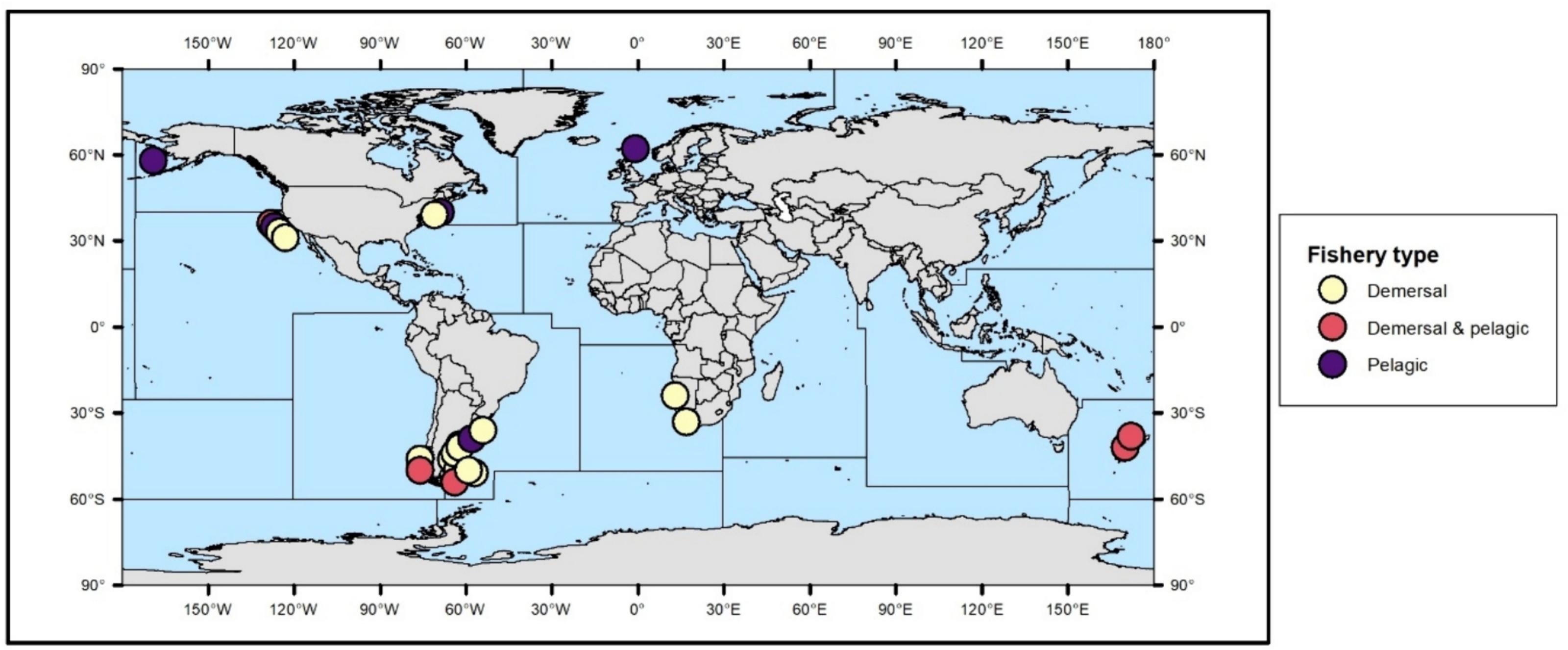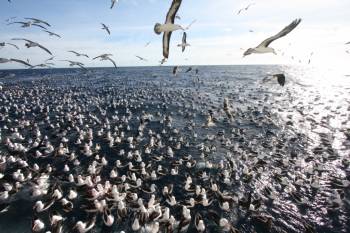
Availability of data on estimated total seabird bycatch in different trawl fisheries in FAO Major Fishing Areas (from the publication)
Richard Phillips (British Antarctic Survey, Cambridge, UK) and colleagues have reviewed open access in the journal Biological Conservation seabird mortality caused by trawl fisheries around the world. “Across the Southern Ocean, species estimated to be caught in their thousands were, in order and as a percentage of the total, Black-browed Albatross Thalassarche melanophris (23,176 birds, 68 %), Southern Giant Petrel Macronectes giganteus (2812 birds, 8 %), Northern Giant Petrel Macronectes halli (1941 birds, 5 %) …”.
The paper’s abstract follows
‘Seabirds are amongst the most threatened taxa in the world, often due to incidental mortality (bycatch) in fisheries. Hundreds of thousands are thought to be killed worldwide in gillnets and longlines each year, but global mortality in trawl fisheries is unknown. Based on our comprehensive review, bycatch totals from cable strikes and net captures were available for only 25 fisheries. Bycatch rates were highly variable, precluding substitution from monitored to unmonitored fisheries to estimate bycatch totals, and total fishing effort was often unknown, which is also a prerequisite for scaling bycatch rates to estimate total birds killed. Ten, seven and one trawl fishery were known to catch of the order of 100s, 1000s and 10,000s of birds, respectively, and total bycatch from all monitored fisheries sums to ∼44,000 birds per year. However, given the scale of cryptic mortality and the many unmonitored or poorly monitored fisheries, the actual global mortality in trawl fisheries will be much higher. The most bycaught species were albatrosses and large petrels (many of which are threatened) in the Southern Hemisphere, and gannets in the Northern Hemisphere. The few long-term studies indicated that mitigation measures (particularly strategic offal management and bird-scaring lines) were effective at reducing bycatch rates. Much improved regulations, and close monitoring of compliance and bycatch rates are essential for ensuring trawl fisheries do not continue to have major impacts on vulnerable seabird populations.”

Black-browed Albatrosses gather en masse behind a trawler in the South Atlantic, photograph by Graham Parker
Read the British Antarctic Survey's press release on the scientific paper.
With thanks to Richard Phillips.
Reference:
Phillips, R.A., Fox, E., Crawford, R., Prince, S. & Yates, O. 2024. Incidental mortality of seabirds in trawl fisheries: a global review. Biological Conservation 296. doi.org/10.1016/j.biocon.2024.110720.
25 July 2024

 Español
Español  English
English  Français
Français